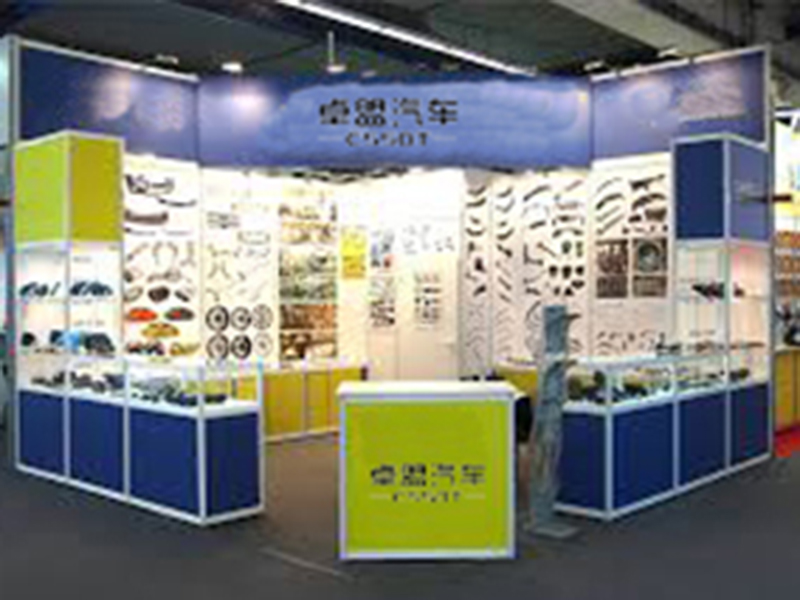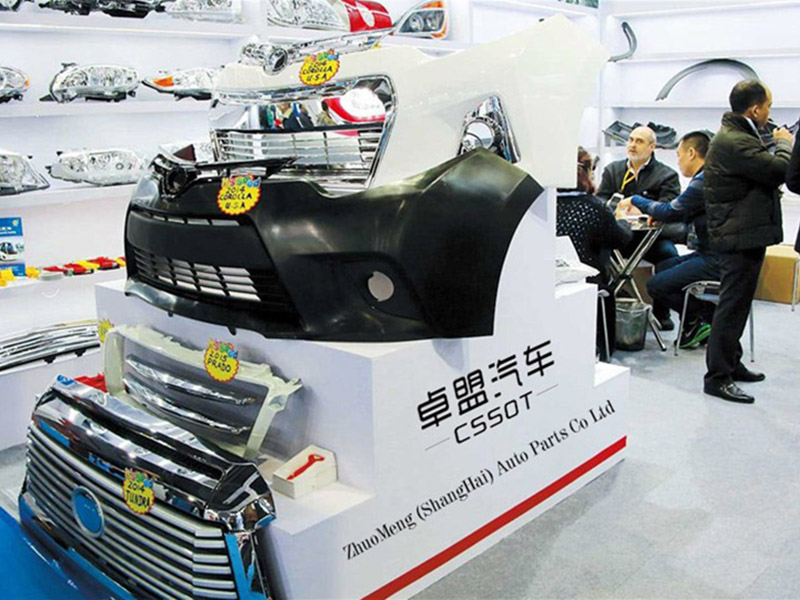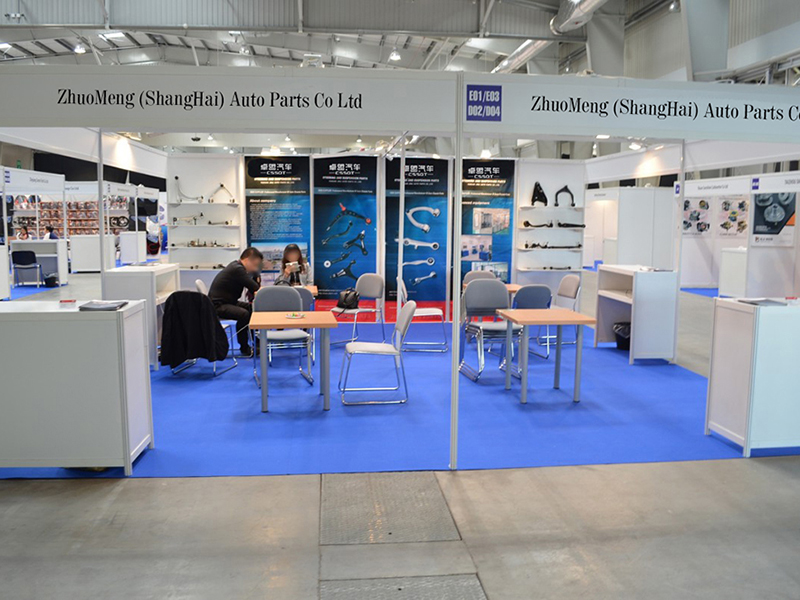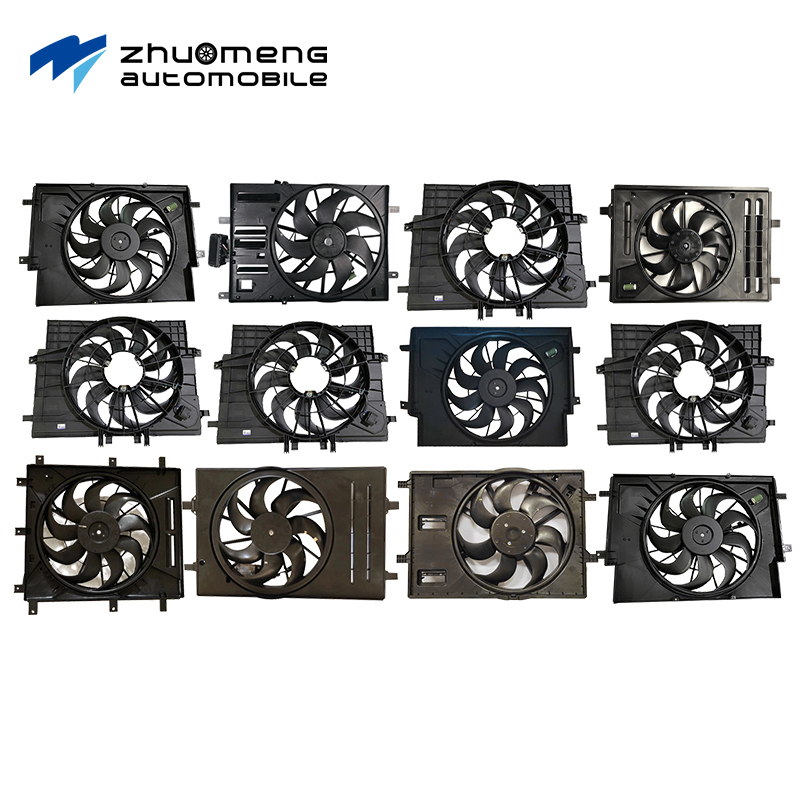Working position and principle of automobile cooling fan
1. When the tank temperature sensor (actually the temperature control valve, not the water gauge temperature sensor) detects that the tank temperature exceeds the threshold (mostly 95 degrees), the fan relay engages;
2. The fan circuit is connected through the fan relay, and the fan motor starts.
3. When the water tank temperature sensor detects that the water tank temperature is lower than the threshold, the fan relay is separated and the fan motor stops working.
The factor related to fan operation is the tank temperature, and the tank temperature is not directly related to the engine water temperature.
The working position and principle of automobile cooling fan: automobile cooling system includes two types.
Liquid cooling and air cooling. The cooling system of a liquid-cooled vehicle circulates the liquid through pipes and channels in the engine. When liquid flows through a hot engine, it absorbs heat and cools the engine. After the liquid has passed through the engine, it is diverted to a heat exchanger (or radiator), through which the heat from the liquid is dissipated into the air. Air cooling Some early cars used air cooling technology, but modern cars hardly use this method. Instead of circulating liquid through the engine, this cooling method uses aluminum sheets attached to the surface of the engine cylinders to cool them. Powerful fans blow air into the aluminum sheets, dissipating heat into the empty air, which cools the engine. Because most cars use liquid cooling, ductwork cars have a lot of piping in their cooling system.
After the pump has delivered the liquid to the engine block, the liquid begins to flow through the engine channels around the cylinder. The fluid then returns to the thermostat through the engine's cylinder head, where it flows out of the engine. If the thermostat is turned off, the fluid will flow directly back to the pump through the pipes around the thermostat. If the thermostat is turned on, the liquid will begin to flow into the radiator and then back into the pump.
The heating system also has a separate cycle. The cycle starts in the cylinder head and feeds the liquid through the heater bellows before returning to the pump. For cars with automatic transmissions, there is usually a separate cycle process to cool the transmission oil built into the radiator. Transmission oil is pumped by the transmission through another heat exchanger in the radiator. The liquid can operate in a wide temperature range from well below zero degrees Celsius to well above 38 degrees Celsius.
Therefore, whatever liquid is used to cool an engine must have a very low freezing point, a very high boiling point, and be able to absorb a wide range of heat. Water is one of the most efficient liquids to absorb heat, but the freezing point of water is too high to meet the objective conditions for automobile engines. The liquid most cars use is a mixture of water and ethylene glycol (c2h6o2), also known as coolant. By adding ethylene glycol to water, the boiling point can be significantly increased and the freezing point lowered.
Every time the engine is running, the pump circulates the liquid. Similar to the centrifugal pumps used in cars, as the pump spins, it pumps the liquid outside by centrifugal force and constantly sucks it in through the middle. The inlet of the pump is located near the center so that the liquid returning from the radiator can contact the pump blades. The pump blades carry the fluid to the outside of the pump, where it enters the engine. The fluid from the pump begins to flow through the engine block and head, then into the radiator, and finally back to the pump. The engine cylinder block and head have a number of channels made from casting or mechanical production to facilitate fluid flow.
If the liquid in these pipes flows smoothly, only the liquid in contact with the pipe will be cooled directly. The heat transferred from the liquid flowing through the pipe to the pipe depends on the temperature difference between the pipe and the liquid touching the pipe. Therefore, if the liquid in contact with the pipe is cooled quickly, the heat transferred will be quite small. All the liquid in the pipe can be used efficiently by creating turbulence in the pipe, mixing all the liquid, and keeping the liquid in contact with the pipe at high temperatures to absorb more heat.
The transmission cooler is very similar to the radiator in the radiator, except that the oil does not exchange heat with the air body, but with the antifreeze in the radiator. Pressure tank cover Pressure tank cover can increase the boiling point of antifreeze by 25℃.
The key function of the thermostat is to heat up the engine quickly and maintain a constant temperature. This is achieved by adjusting the amount of water flowing through the radiator. At low temperatures, the radiator outlet will be completely blocked, meaning that all the antifreeze will circulate through the engine. Once the temperature of the antifreeze rises to 82-91 C, the thermostat will be turned on, which will allow the liquid to flow through the radiator. When the antifreeze temperature reaches 93-103℃, the temperature controller will always be on.
The cooling fan is similar to a thermostat, so it must be adjusted to keep the engine at a constant temperature. Front wheel drive cars have electric fans because the engine is usually mounted horizontally, meaning the output of the engine faces the side of the car.
The fan can be adjusted by thermostatic switch or engine computer. When the temperature rises above the set point, these fans will be turned on. When the temperature drops below the set value, these fans will be turned off. Cooling fan Rear-wheel drive vehicles with longitudinal engines are usually equipped with engine-driven cooling fans. These fans have thermostatic viscous clutches. The clutch is located in the center of the fan, surrounded by airflow from the radiator. This particular viscous clutch is sometimes more like the viscous coupler of an all-wheel drive car. When the car overheats, open all the Windows and run the heater when the fan is running at full speed. This is because the heating system is actually a secondary cooling system, which can reflect the state of the main cooling system on the car.
Heater system The heater bellows located on the dashboard of the car are actually a small radiator. The heater fan sends empty air through the heater bellows and into the passenger compartment of the car. Heater bellows are similar to small radiators. The heater bellows suck the thermal antifreeze from the cylinder head and then flow it back into the pump so that the heater can run when the thermostat is turned on or off.















